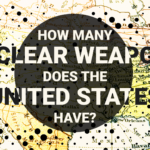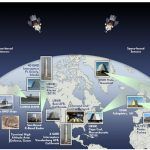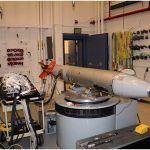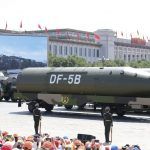U.S. Nuclear Forces, 2009
By Robert S. Norris, Hans M. Kristensen | March 1, 2009

Nuclear Notebook: How many nuclear warheads does the US have?
The election of Barack Obama as the 44th president of the United States promises significant changes in U.S. nuclear policy and priorities compared with the George W. Bush administration. During the 2008 presidential campaign, candidate Obama pledged to “set a new direction in U.S. nuclear weapons policy and show the world that America believes in its existing commitment under the Nuclear Non-Proliferation Treaty [NPT] to work to ultimately eliminate all nuclear weapons.” An abundance of proposals by nongovernmental organizations and former government officials support this pledge. For example, two articles by four former U.S. statesmen have galvanized international calls for renewed progress toward the elimination of nuclear weapons.1 These aspirations resemble but go further than the significant arms control agreements and reductions in nuclear weapons undertaken and implemented in the early 1990s.
To meet these high expectations, the new administration will need to show leadership, reduce the country’s nuclear forces, and reorient the role of nuclear weapons within U.S. security policy.
U.S. operational nuclear forces are approaching levels set forth in the agreements that emerged from the 1997 Helsinki summit between Russian President Boris Yeltsin and U.S. President Bill Clinton, which set the framework for the never-finished START III Treaty. Over the past year, we estimate that the United States has removed from operational status more than 1,000 warheads and has reached the upper limit of 2,200 warheads set by the Strategic Offensive Reduction Treaty (SORT) (otherwise known as the Moscow Treaty) three and a half years early. SORT promises to reduce Russian and U.S. “operationally deployed strategic warheads” to no more than 2,200 by 2012. These recent reductions affect all three arms of U.S. nuclear forces: intercontinental ballistic missiles (ICBMs), submarine-launched ballistic missiles (SLBMs), and the weapons assigned to long-range bombers…
To read this full article for free, visit our online archive here.
To download a PDF of this article, click this link.
To read an authoritative accounting of world nuclear arsenals, click here for all Nuclear Notebook columns.
The Nuclear Notebook is researched and written by Hans M. Kristensen, director of the Nuclear Information Project with the Federation of American Scientists and Robert S. Norris, a senior fellow with the FAS. The Nuclear Notebook column has been published in the Bulletin of the Atomic Scientists since 1987. The Nuclear Notebook column has been published in the Bulletin of the Atomic Scientists since 1987.
Together, we make the world safer.
The Bulletin elevates expert voices above the noise. But as an independent nonprofit organization, our operations depend on the support of readers like you. Help us continue to deliver quality journalism that holds leaders accountable. Your support of our work at any level is important. In return, we promise our coverage will be understandable, influential, vigilant, solution-oriented, and fair-minded. Together we can make a difference.
Issue: Bulletin of the Atomic Scientists Volume 65 Issue 2
Keywords: Nuclear Notebook, United States
Topics: Nuclear Notebook
















